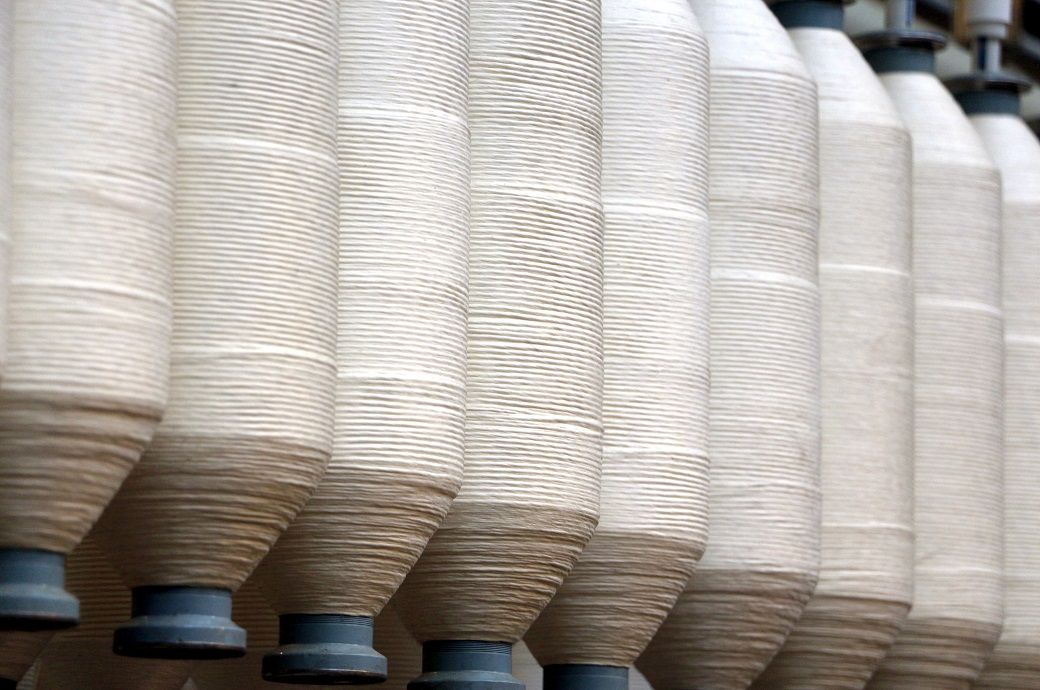
However, an expected moderation in cotton prices will lead to lower realisations, which is likely to translate to a 7 per cent year-on-year (YoY) decline in revenues to approximately ₹34,000 crore in FY24, ICRA said in a press release.
While the cash accruals of players are expected to decline marginally, ICRA expects the spinners’ borrowings to come down too, in FY24. Lack of any major capital expenditure plan along with lower working capital requirements, because of the softening in cotton prices, are likely to lower the debt levels and improve the capital structure for companies. ICRA expects the debt coverage ratios for the sector to improve in FY24 with debt/OPBITDA forecast to ease to approximately 2.2 times from 2.4 times in FY23. The capital structure, as reflected by the ratio total outside liabilities/tangible net worth ratio, is also expected to improve marginally to approximately 0.5 times in FY24 (0.6 times in FY23).
Domestic cotton prices were at a historical high in the first half of calendar year 2022 (H1 CY22) but had declined steadily in H2 CY22. For 5M CY23, cotton prices declined further by approximately 20 per cent compared with December 2022, as the new season crop hit the market. As per the estimates of the office of the textile commissioner, domestic cotton production for CY23 is projected to increase by 10 per cent on the back of expected higher acreage in Maharashtra and Gujarat. ICRA however notes on the slow progress on the cotton sowing areas in Maharashtra and southern states due to the delayed onset of monsoon. However, as the sowing season extends till July in these regions, ICRA expects a pickup with the normalisation of monsoon. The deficit (on a YoY basis) in sowing has already improved from approximately 14 per cent as at the end of June to approximately 11 per cent as on July 7.
Cotton yarn prices have been declining since June 2022 following the softening in cotton fibre prices and subdued demand from downstream apparel companies. ICRA expects cotton yarn prices to remain steady in the near term and increase marginally in H2 FY24 as demand from downstream companies picks up. The average gross contribution margins for spinners had declined sharply (24 per cent) in FY23 after a steep increase (27 per cent) in FY22. The decline in FY23 was led by high cotton fibre prices and weak demand from downstream companies. Despite an expected increase in yarn prices in H2 FY24, ICRA estimates the gross contribution margins of spinners to contract further by approximately 5 per cent YoY in FY24 due to an unfavourable relative movement of cotton fibre and yarn prices.
Exports account for approximately 25-35 per cent of India’s cotton yarn production, while the domestic market makes up for the rest. With a sharp surge in cotton prices and the ensuing operational disruptions, yarn production declined approximately 15 per cent YoY and exports plunged 53 per cent YoY in FY23. ICRA expects cotton yarn production to increase by approximately 15-17 per cent, while exports are estimated to form 28 per cent of the total cotton yarn production in FY24. Nonetheless, cotton yarn production and exports would remain lower than the historical highs seen in CY2022.
Kaushik Das, vice president and co-group head, corporate sector ratings, ICRA, said: “Despite lower revenues, ICRA expects the operating margins of Indian cotton spinning companies to improve by approximately 50-100 basis points (bps) to 11.5-12 per cent in FY24. The spinners are expected to benefit from the operating efficiencies arising from higher volumes, and lower logistics expenses as the blockages at the ports in various regions have started to ease, accompanied by a reduction in container freight rates. Nonetheless, profits and cash accruals of spinners are expected to be marginally lower in FY24 compared to FY23.
“The industry had undertaken high debt-funded capex in FY22, partly due to the deferment of major capital expenses during the Covid period (FY20-21). Consequently, with a drop in yarn demand in H2 FY23, the coverage metrics of the industry deteriorated in FY23. Due to limited order visibility for FY24, as of now, the spinners have halted major capex plans for the near term. ICRA, however, expects capex announcements for FY25 to pick up, driven by the modernisation requirements of machineries, demand flow from the China Plus One movement and demand resumption from EU and North American apparel consumers.”
ALCHEMPro News Desk (DP)
Receive daily prices and market insights straight to your inbox. Subscribe to AlchemPro Weekly!